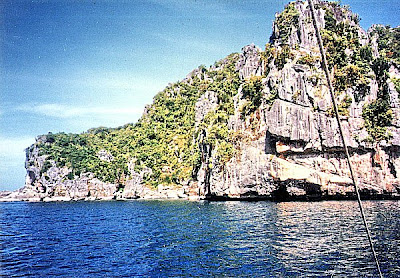The next day, Holy Thursday (and Araw ng Kagitingan as well), Jandy and I decided to join 8 other guests of the inn I was staying in who were going on a 4-km. uphill hike, along the almost empty, party rough Besao Rd., to Lake Danum (derived from the Kankanai or Ilocano word meaning “water”). From a vantage point along this road, we had a panoramic view of Sagada town nestled between mountains. After about an hours hike, we turned left on a fork on the road and reached the lake.
 |
| Lake Danum |
This lake which I actually mistook for a pond is actually referred to by the locals as a lake. It is peaceful and its grassy and shady ground makes it ideal for picnicking and camping. Some sort of blackberries were in bloom and some members of the group tried some. In front of the lake is a hill which, according to the locals, offers a great view of the setting sun behind the mountains. Unfortunately, we didn’t plan to wait that long.
It was the peak of the El Nino phenomenon when I arrived in Sagada but, even if the lake’s water level was low, its color remained torquiose green instead of orange as was usually the case. The lake is also a jump-off point for trekking the 1,899-m. high Mt. Ampacao, the highest mountain near Sagada. Another hour’s walk past the lake would have brought us to the next town of Besao, another pleasant and mostly Anglican town with more rice terraces. Here, Lake Danum is called Lake Banao. However, we gave up on the idea and just hitched a ride on a passing vehicle on its way back to Sagada.

































